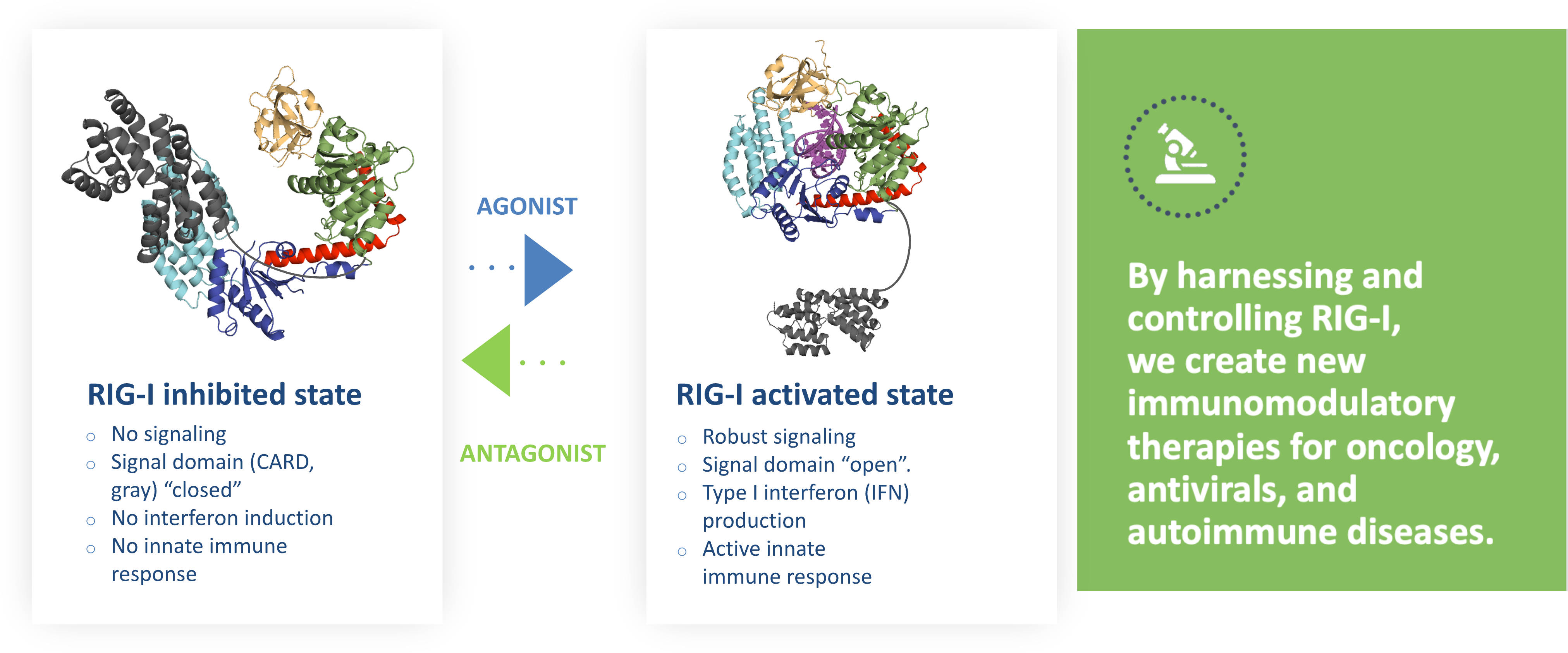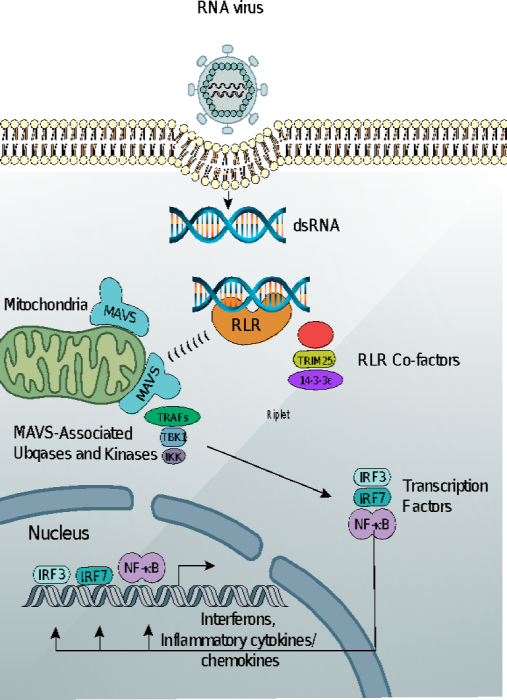Our co-founder Dr. Anna Marie Pyle from Yale University is the co-discoverer of the RIG-I receptor family and conducted many of the key structural and biochemical investigations to understand the structure and function of RIG-I
RIG-I acts like a switch, remaining in its inhibited state in the cytosol until it encounters a high affinity RNA agonist which causes it to undergo a conformational change.


